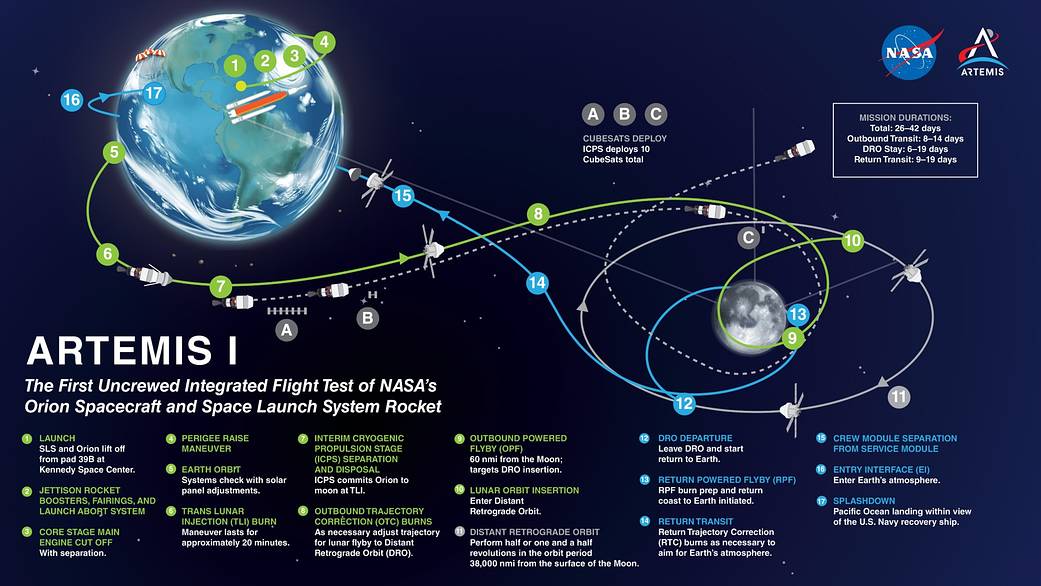
Nearly five days after its sky-lighting launch, NASA’s unpiloted Orion crew capsule closed in on the moon Sunday, on course for a critical rocket firing and lunar flyby Monday to whip the craft into a distant orbit. The goal is to pave the way toward a piloted flight around the moon in 2024.
NASA managers met Saturday and gave flight controllers a “go” to proceed with Orion’s “outbound powered flyby” maneuver, a two-and-a-half-minute firing of the spacecraft’s main engine starting at 7:44 a.m. EST Monday, about 19 minutes after the capsule passes behind the moon on a left-to-right trajectory as viewed from Earth.
The burn will change Orion’s velocity by about 350 mph, committing the craft to a course-changing flyby. And it will be executed during the 34 minutes Orion is out of contact with flight controllers.
Two minutes after passing within about 80 miles of the lunar surface at 7:57 a.m., Orion will swing back into contact as it whips around the moon on a trajectory that will carry the spacecraft back out toward a planned “distant retrograde orbit,” or DRO.
In that planned orbit, Orion will reach a point farther from Earth — 268,558 miles — than any previous human-rated vehicle as flight controllers test its propulsion, navigation and power systems.
“We’ll do the burn … off the backside of the moon for about two and a half minutes,” said Flight Director Jeff Radigan. “And the burn will really put us on our way to the (planned) distant retrograde orbit, which is where we’re going to continue the checkout of Orion.
“All of us will really be looking to receive data since the burn is done on the backside of the moon and we’ll lose comm with a vehicle for a little bit of time, it’ll autonomously do the burn. And then we’ll pick it up and and see how Orion’s doing. ”

Orion’s initial post-launch flight path was set up to carry the spacecraft around the moon and back to Earth even if the main engine failed to fire. After the burn, a free return will no longer be possible and Orion will be reliant on its propulsion system to make it back to Earth.
A second firing of Orion’s main engine Friday at 4:52 p.m. will put Orion in the distant retrograde orbit, so named because the spacecraft will again be moving from left to right, beyond the moon, as viewed from Earth. Six days later, a third main engine firing will send Orion back toward the moon for a second powered flyby on December 5.
That fourth and final burn will put the spacecraft on course for Earth with splashdown in the Pacific Ocean west of San Diego planned for 12:40 p.m. EST on December 11.
The primary goal of the Artemis 1 mission is to test the Orion heat shield during a high-speed re-entry from the moon when the spacecraft will be subjected to 5,000-degree heat from atmospheric friction.
Assuming the initial test flight goes well and no major problems are encountered, NASA plans to launch the Artemis 2 mission atop a Space Launch System mega rocket in 2024, carrying four astronauts on a trip around the moon.
That flight will be followed by the Artemis 3 mission to land the first woman and the next man near the moon’s south pole in the 2025-26 timeframe.
from Spaceflight Now https://ift.tt/PkDQvGw
via World Space Info







0 comments:
Post a Comment